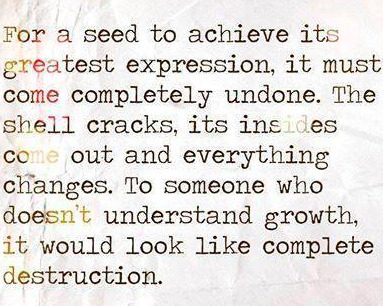Guest Writer: Akaisha Kaderli
 These days, no matter what the topic, the talk is all about sustainability.
These days, no matter what the topic, the talk is all about sustainability.
In regards to financial sustainability, there are 3 legs to the stool; Income, spending and Investments.
Income
Income is derived from money you make through your job using physical or mental labor or both. Passive income can be created through property rentals, bond interest, dividends and or capital gains from investments.
Increasing income can be done by learning a new skill, getting a promotion, or taking on a better or second job. Maximizing your skills and continued education either formal or on your own is a valuable asset. This could be as easy as teaching yourself about investments in your down time. There are plenty of online tools available to learn this.
Also, don’t rule out that Social Security will be available once you become eligible.
Spending
How much you spend and the debt you carry are two areas that are completely manageable by you. The categories of largest spending in any household are housing, transport, taxes and food/entertainment. Depending on where you live, it might make more sense to rent instead of buying a home, or rent out a room in the home you already own, or renting out a subsection of your home in order to help with the mortgage. Putting off that remodel of the bathroom or kitchen, or the re-do of the back yard will also allow you extra money to put into investments.
Regarding transportation, you could walk or bicycle to work, take public transportation instead of owning your own vehicle, car pool or use Uber or a ride sharing service. The cost of car ownership is over $8,000 per year, $650.00 per month, or $22.00 per day according to AAA’s 2015 Your Driving Cost Study. You can also use “Real Cost Of Owning A Car Calculator & Tips on How to Reduce It” calculator to estimate how much owning a car costs. How much of your day is spent covering your car expenses which according to Fortune is parked 95% of the time?
Food and entertainment are other expenses entirely under your control. Brown bagging your lunch to work, although not fashionable, can create great savings. Not purchasing that specialty coffee daily or drinks after work is another area of savings. Learning how to cook, which is healthier and a great skill to learn will payoff for a lifetime. Purchasing products in bulk or on sale, learning to break down your own meats, or even utilizing the crock pot for one dish meals all increase your ability to eat well for less.
What you do for vacation options, what kind of digital equipment or chrome-based toys (cars, motorcycles, boats) you are inclined to purchase and what you do for fun on weekends all add up. For the most part these items are depreciable assets. Rarely can you sell them for what you paid or for more.
The choice is yours. You can invest for your future retirement or live it up today. This doesn’t mean you cannot enjoy life today, but always keep an eye on the prize.
Make adjustments in any of these spending areas and you can see your investments grow measurably.
Debt is an albatross around your neck. It slows down the creation of your wealth, so get rid of it. Whether it is a student loan, car loan or credit card debt, pay it down and quickly. Debt servicing fees will eat you alive.
Track spending
To understand your cost of living it is imperative that you track your spending. This simple tool can be a real eye opener. Do you have any idea how much you spend per day, month or year? This is key to your financial independence.
By knowing the amount of money you need annually to maintain your current lifestyle will give valuable insight into how much investable capital you will need to cover your expenses.
These figures are important to know for several reasons.
First, if you can aggressively manage your cost per day number, then this allows you to put more into investments and savings, or to pay down your debt. This will help you grow your wealth in leaps and bounds.
Second, if you train yourself now to live below your means, you will have that self-discipline already in place for the rest of your life. This seems like a simple statement however as is evident by the amount of household credit card debt outstanding, this is not so common.
Thirdly, knowing what you spend per year will tell you how much money you will need to have in liquid assets to pay for your financial independence. Experts say by investing 25 times the amount you spend per year in liquid assets such as stocks and bonds for your retirement will create a sustainable money machine.
Investments = Financial freedom
Create your own money machine by investing as soon as possible in your life and letting time work for you. If you are a Millennial, time is on your side and it’s your most valuable asset.
When it comes to creating a financially sustainable environment for yourself, one must have each leg of the stool being strong, holding its own weight. This financial independence will create a life of personal freedom and choice. You could still choose to work if you enjoy what you are doing, and thereby continue to contribute to your personal wealth. You could have the time and wherewithal to create a product or service that will benefit others without the pressure of debt or living expenses. You could travel or volunteer anywhere around the world, utilizing your personal skills and abilities.
You would be in charge of your life and not dependent on a job, a boss, or a particular location with high living expenses or bad weather. Once your financial life is self-sustaining, then you are a free agent and opportunities and choices will appear for you.
We believe that financial independence is one of the best things you could do for yourself and – without sounding dramatic – for the world. Once you are no longer a wage slave and on the treadmill of working and consuming, then you have the freedom in both time and money to contribute to those less fortunate than you. Being self-sustaining often creates the by-product of consuming less and enjoying more. Acquiring experiences over things has worked for us.
We encourage you to achieve this beneficial goal no matter at what age you accomplish it.
Did you enjoy this article? Become a Kuel Life Member today to support our ad-free Community. Sign-up for our Sunday newsletter and get your expert content delivered straight to your inbox.






















